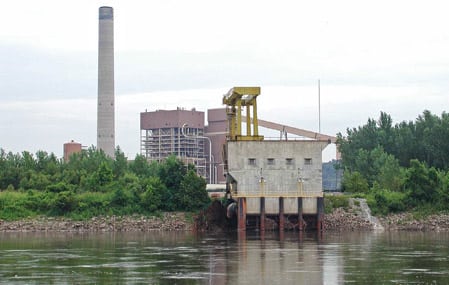Hydroelectric power, a cornerstone of renewable energy, harnesses the energy of flowing water to generate electricity. At the heart of a hydropower plant lies the intake structure, a critical component that sets the stage for efficient energy conversion. In this article, we explore the role, design considerations, and importance of intake structures in hydropower plants.
Definition and Purpose:
An intake structure in a hydropower plant is a facility designed to capture and control the flow of water from a river or reservoir into the power plant’s penstock, which directs water toward the turbines. The primary purpose of the intake structure is to ensure a consistent and controlled supply of water, optimizing the plant’s efficiency and power generation capabilities.
Components of Intake Structures:
- Trash Racks:
- Function: Positioned at the entrance of the intake structure, trash racks prevent debris such as branches, leaves, and aquatic vegetation from entering the penstock.
- Importance: Clearing debris ensures the smooth and uninterrupted flow of water to the turbines, minimizing the risk of damage and optimizing performance.
- Inlet Gates:
- Function: Inlet gates are adjustable structures that control the volume of water entering the intake. They enable operators to regulate the flow based on power demand and operational requirements.
- Importance: Precise control of water flow is crucial for maintaining the plant’s operational stability and efficiency.
- Head Pond:
- Function: The head pond, created by the intake structure, serves as a reservoir to store water temporarily. This helps regulate the flow and maintain a constant water level for consistent power generation.
- Importance: Stabilizing water levels ensures a steady supply of water to the turbines, minimizing fluctuations that could affect power output.
Design Considerations:
- Hydraulic Design:
- Intake structures must be designed to minimize energy losses and turbulence, ensuring an efficient transfer of water from the source to the turbines.
- The shape and layout of the intake structure should be optimized to prevent cavitation, a phenomenon that can damage turbine blades.
- Environmental Considerations:
- The design should account for the environmental impact, ensuring that fish and other aquatic life are protected. Fish-friendly intake designs include fish screens and bypass systems to prevent entrainment.
- Sediment Management:
- Intake structures must address sedimentation concerns to prevent the accumulation of sediment in the penstock or turbines, which can reduce efficiency over time.
- Sediment flushing systems may incorporated to manage sediment buildup.
- Structural Stability:
- Given the dynamic nature of water flow, intake structures must be structurally stable to withstand the forces exerted by the water.
- Foundations and materials must chosen to withstand corrosion and erosion.
Importance of Intake Structures:
- Efficiency Optimization:
- Well-designed intake structures ensure a consistent and controlled water supply, optimizing the efficiency of the hydropower plant.
- Efficient water intake contributes to stable and reliable power generation.
- Environmental Impact Mitigation:
- Thoughtful design mitigates the environmental impact by protecting aquatic life, preventing debris from entering the plant, and addressing sedimentation concerns.
- Fish-friendly intake structures promote biodiversity and sustainability.
- Operational Control:
- The ability to control water flow through inlet gates allows operators to adapt to changing power demands, contributing to the stability and reliability of the power plant.
- Long-Term Sustainability:
- Proper design and maintenance of intake structures contribute to the long-term sustainability of hydropower plants. Ensuring their continued operation and minimizing downtime for repairs.
Conclusion:
Intake structures are integral components in the complex machinery of hydropower plants. Their role in capturing, regulating, and controlling the flow of water sets the foundation for efficient and sustainable electricity generation. As the world increasingly turns to renewable energy sources, understanding the intricacies and importance of intake structures becomes paramount in ensuring the optimal performance and environmental responsibility of hydroelectric power plants.

